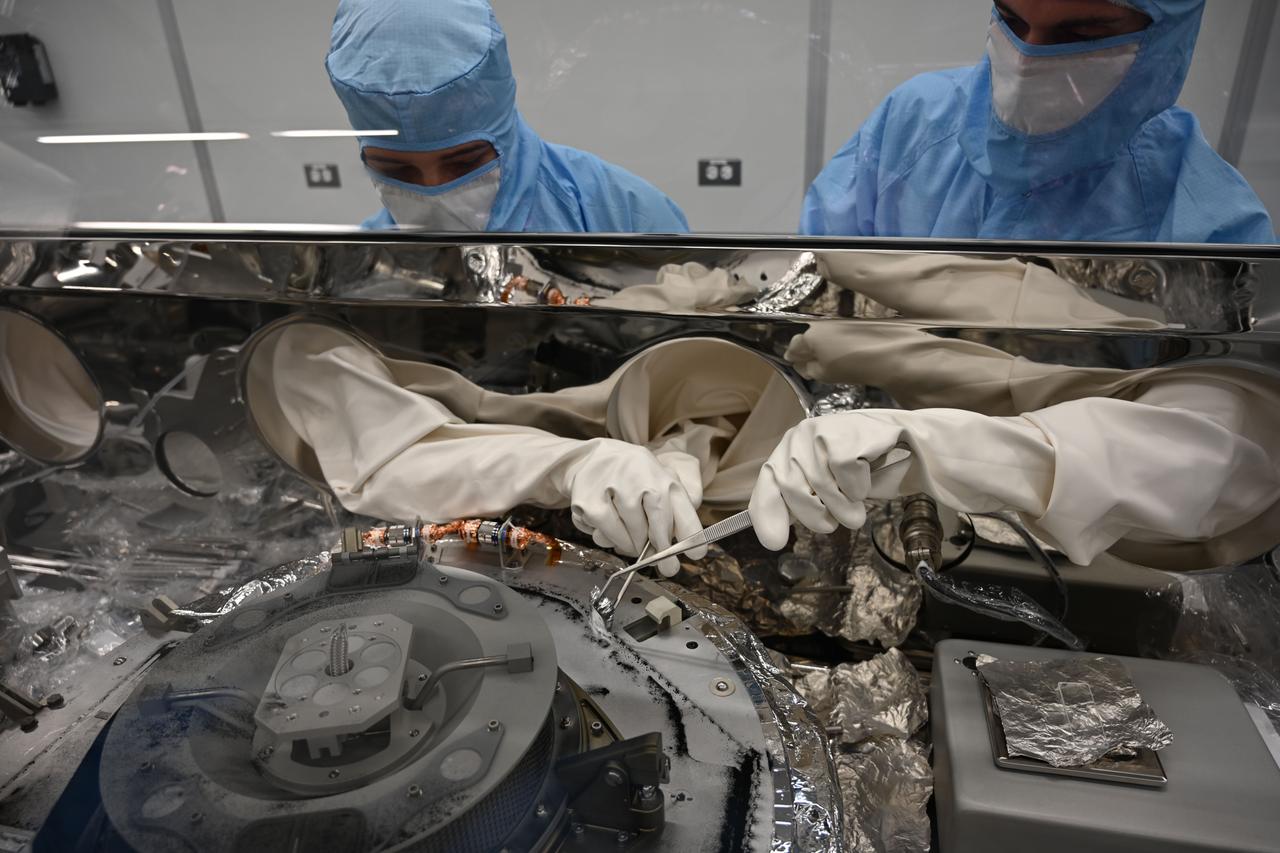The final hurdle to retrieving the full sample of asteroid Bennu collected by OSIRIS-REx – the first asteroid return sample in US history – has at last been overcome. NASA technicians have been able to successfully remove the two fasteners from the sampler head that have been preventing them from opening the canister fully since September. This canister opening has to be conducted under the most pristine conditions to not contaminate the sample, so this was quite the issue. Now, NASA can get to the pristine material from asteroid Bennu.
Since they could just take a circular saw and cut through it, once they realized two of the 35 fasteners couldn’t be removed with the available and approved tools, researchers had to develop new tools that would do the job.
“Our engineers and scientists have worked tirelessly behind the scenes for months to not only process the more than 70 grams of material we were able to access previously, but also design, develop, and test new tools that allowed us to move past this hurdle,” Eileen Stansbery, division chief for ARES (Astromaterials Research and Exploration Science) at NASA’s Johnson Space Center, said in a statement.
“The innovation and dedication of this team has been remarkable. We are all excited to see the remaining treasure OSIRIS-REx holds.”
The new tools were made of a specific grade of surgical, non-magnetic stainless steel; the hardest metal approved for use in the pristine curation gloveboxes. Before it was used on the precious container it was tested in the rehearsal lab.
“In addition to the design challenge of being limited to curation-approved materials to protect the scientific value of the asteroid sample, these new tools also needed to function within the tightly-confined space of the glovebox, limiting their height, weight, and potential arc movement,” said Dr Nicole Lunning, OSIRIS-REx curator at Johnson.
“The curation team showed impressive resilience and did incredible work to get these stubborn fasteners off the TAGSAM head so we can continue disassembly. We are overjoyed with the success.”

Astromaterials processors Mari Montoya, left, and Curtis Calva, right, use tools to collect asteroid particles from the base of the OSIRIS-REx science canister in September 2023.
Image credit: NASA
The team was able to remove about 70.3 grams of material (2.48 ounces) from asteroid Bennu before even getting to the bulk of the action, hidden behind the fasteners. The mission’s goal has already been surpassed with that sample alone and the bounty waiting for the scientists will deliver so much more. A portion of the sample is already available for the general public to see.
Asteroid Bennu, the most dangerous known asteroid, is a window into the very beginning of the Solar System. A primitive space rock that has remained mostly unaltered for billions of years, studying its physical and chemical properties could give us hints about the building blocks of planets as they were forming 4.5 billion years ago.
Source Link: NASA Finally Removes Last Two Fasteners To Access Historic Bennu Asteroid Sample